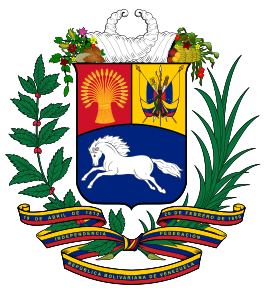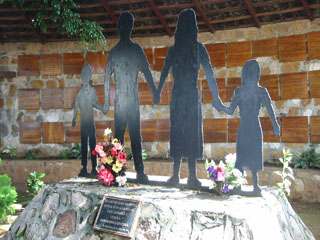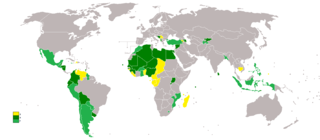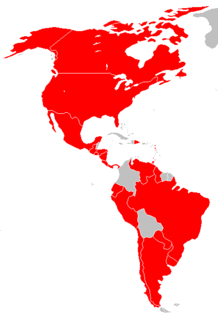Related Research Articles
International human rights instruments are the treaties and other international texts that serve as legal sources for international human rights law and the protection of human rights in general. There are many varying types, but most can be classified into two broad categories: declarations, adopted by bodies such as the United Nations General Assembly, which are by nature declaratory, so not legally-binding although they may be politically authoritative and very well-respected soft law;, and often express guiding principles; and conventions that are multi-party treaties that are designed to become legally binding, usually include prescriptive and very specific language, and usually are concluded by a long procedure that frequently requires ratification by each states' legislature. Lesser known are some "recommendations" which are similar to conventions in being multilaterally agreed, yet cannot be ratified, and serve to set common standards. There may also be administrative guidelines that are agreed multilaterally by states, as well as the statutes of tribunals or other institutions. A specific prescription or principle from any of these various international instruments can, over time, attain the status of customary international law whether it is specifically accepted by a state or not, just because it is well-recognized and followed over a sufficiently long time.

The Organization of American States, or the OAS or OEA, is a continental organization that was founded on 30 April 1948, for the purposes of solidarity and cooperation among its member states within the Western Hemisphere. During the Cold War, the United States hoped the OAS would be a bulwark against the spread of communism. Since the 1990s, the organization has focused on election monitoring. Headquartered in the United States' capital Washington, D.C., the OAS's members are the 35 independent states of the Americas.

The foreign relations of Venezuela had since the early twentieth century been particularly strong with the United States. However, with the election of Hugo Chávez as President of Venezuela in 1998, the foreign policy differed substantially from that of previous Venezuelan governments.
International human rights law (IHRL) is the body of international law designed to promote human rights on social, regional, and domestic levels. As a form of international law, international human rights law are primarily made up of treaties, agreements between sovereign states intended to have binding legal effect between the parties that have agreed to them; and customary international law. Other international human rights instruments, while not legally binding, contribute to the implementation, understanding and development of international human rights law and have been recognized as a source of political obligation.
The Inter-American Commission on Human Rights is an autonomous organ of the Organization of American States (OAS).

The American Convention on Human Rights, also known as the Pact of San José, is an international human rights instrument. It was adopted by many countries in the Western Hemisphere in San José, Costa Rica, on 22 November 1969. It came into force after the eleventh instrument of ratification was deposited on 18 July 1978.
The American Declaration of the Rights and Duties of Man, also known as the Bogota Declaration, was the world's first international human rights instrument of a general nature, predating the Universal Declaration of Human Rights by less than a year.

The Inter-American Court of Human Rights is an autonomous judicial institution based in the city of San José, Costa Rica. Together with the Inter-American Commission on Human Rights, it makes up the human rights protection system of the Organization of American States (OAS), which serves to uphold and promote basic rights and freedoms in the Americas. The Court rules on whether a State has violated an individual's human rights, rather than if individuals are guilty of human rights violations.

In international human rights law, a forced disappearance occurs when a person is secretly abducted or imprisoned by a state or political organization, or by a third party with the authorization, support, or acquiescence of a state or political organization, followed by a refusal to acknowledge the person's fate and whereabouts, with the intent of placing the victim outside the protection of the law.

The Inter-American Treaty of Reciprocal Assistance was an agreement signed in 1947 in Rio de Janeiro among many countries of the Americas. The central principle contained in its articles is that an attack against one is to be considered an attack against them all; this was known as the "hemispheric defense" doctrine. Despite this, several members have breached the treaty on multiple occasions. The treaty was initially created in 1947 and came into force in 1948, in accordance with Article 22 of the treaty. The Bahamas was the most recent country to sign and ratify it in 1982.

The International Convention on the Protection of the Rights of All Migrant Workers and Members of Their Families is a United Nations multilateral treaty governing the protection of migrant workers and families. Signed on 18 December 1990, it entered into force on 1 July 2003 after the threshold of 20 ratifying States was reached in March 2003. The Committee on Migrant Workers (CMW) monitors implementation of the convention, and is one of the seven UN-linked human rights treaty bodies.

The Inter-American Convention to Prevent and Punish Torture (IACPPT) is an international human rights instrument, created in 1985 within the Western Hemisphere Organization of American States and intended to prevent torture and other similar activities.

The International Convention for the Protection of All Persons from Enforced Disappearance (ICPPED) is an international human rights instrument of the United Nations and intended to prevent forced disappearance defined in international law, crimes against humanity. The text was adopted by the United Nations General Assembly on 20 December 2006 and opened for signature on 6 February 2007. It entered into force on 23 December 2010. As of October 2019, 98 states have signed the convention and 62 have ratified it.

The Inter-American Convention Against Terrorism was adopted by the member countries of the Organization of American States (OAS) at its General Assembly held in Bridgetown, Barbados, on 3 June 2002. The Convention, negotiated pursuant to a mandate from the OAS Foreign Ministers shortly after the terrorist attacks of 11 September 2001 in the United States, reflects the Americas' hemispheric-wide commitment to enhancing cooperation in the fight against terrorism.
The International Coalition against Enforced Disappearances (ICAED) gathers organizations of families of disappeared and human rights NGOs working in a nonviolent manner against the practice of enforced disappearances at the local, national and international level.
The Inter-American Convention Against the Illicit Manufacturing of and Trafficking in Firearms, Ammunition, Explosives, and Other Related Materials (CIFTA), originally the Inter-American Convention Against Illicit Firearms Trafficking in the Americas, is an international firearms control treaty.
The Inter-American Convention on the Elimination of All Forms of Discrimination Against Persons with Disabilities is a regional human rights instrument, adopted in 1999 within the Organization of American States. It calls on states to facilitate the full integration of persons with disabilities into society through legislation, social initiatives and educational programmes. It entered into force on 14 September 2001.

The Inter-American Convention on the Prevention, Punishment, and Eradication of Violence against Women, better known as the Belém do Pará Convention, is an international human rights instrument adopted by the Inter-American Commission of Women (CIM) of the Organization of American States at a conference held in Belém do Pará, Brazil on 9 June 1994. It is the first legally binding international treaty that criminalises all forms of violence against women, especially sexual violence. On 26 October 2004, the Follow-Up Mechanism (MESECVI) agency was established to ensure the State parties' compliance with the Convention.
References
This article needs additional citations for verification .(September 2018) (Learn how and when to remove this template message) |
- ↑ "INTER-AMERICAN CONVENTION ON THE FORCED DISAPPEARANCE OF PERSONS". Organization of American States. Retrieved 6 September 2018.